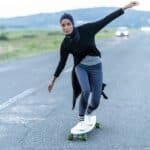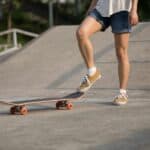So, you want to learn how to skateboard, but maybe you are a little nervous or assume that skateboarding is a hobby for the younger generation.
Over the years, more adults are starting to learn how to skateboard, regardless of responsibilities, and you can join this growing trend.
But how can you study skateboarding? It’s not much more complicated than learning how to ride a bike!
If you have a good quality beginner’s skateboard and follow a few tips, soon you’ll be able to soar down the sidewalk alongside the neighborhood teens.
Learn How to Skateboard
You’ll need to have enough confidence, a beginner’s skateboard, and safety equipment. Next, select a good area to start practicing. Then, learn how to balance on a skateboard before attempting movements. After mastering skateboard balancing, push yourself off with one foot before returning that foot to the board.
Preparation is the First Step in Learning How to Skateboard
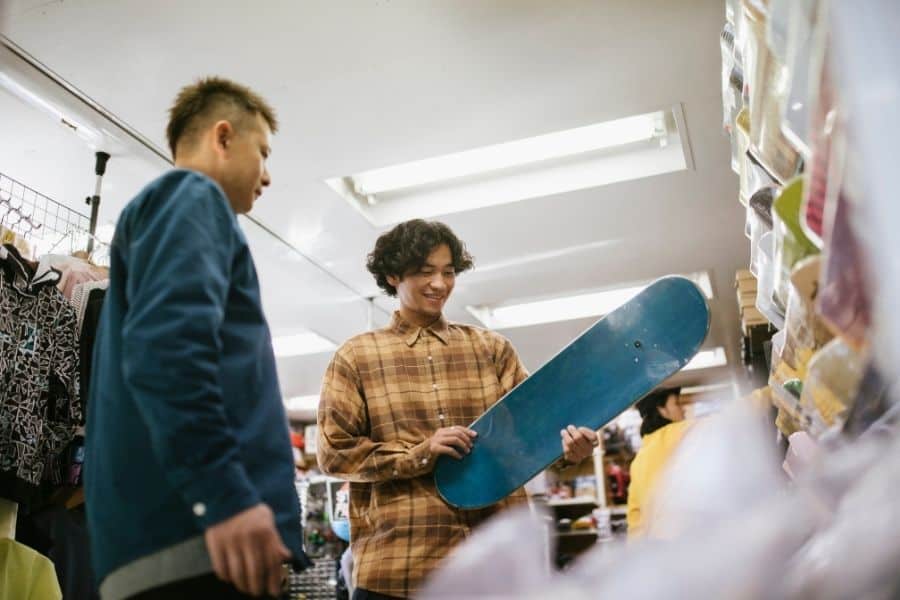
Learn How to Skateboard
If you want to learn how to skateboard, you need to be prepared with confidence and equipment.
Sure, you might not be full of confidence if you are in your 30s or 40s and have never stepped foot on a skateboard before, but if youngsters can do it, so can you!
Or, maybe you used to skateboard as a teen and want to get back into it. If you haven’t been on a skateboard for years, it is natural for you to feel some anxiety, but you need to possess at least a little confidence in yourself to master skateboarding.
You’ll need to invest in a good-quality beginner’s skateboard from your nearest skating store, which can run you about a hundred bucks.
Although you may be able to find cheaper skateboards at bargain retailers, these are often poorer quality boards that could contribute to injuries, especially considering that you’re a beginner.
If you want to avoid expensive hospital bills, it’s also wise to invest in a helmet, elbow pads, knee pads, and grip tape, which can prevent slips.
Many skateboarders also wear pants and long sleeve shirts to reduce scrapes and minor injuries.
Next, You Need to Choose a Good Area for Practice
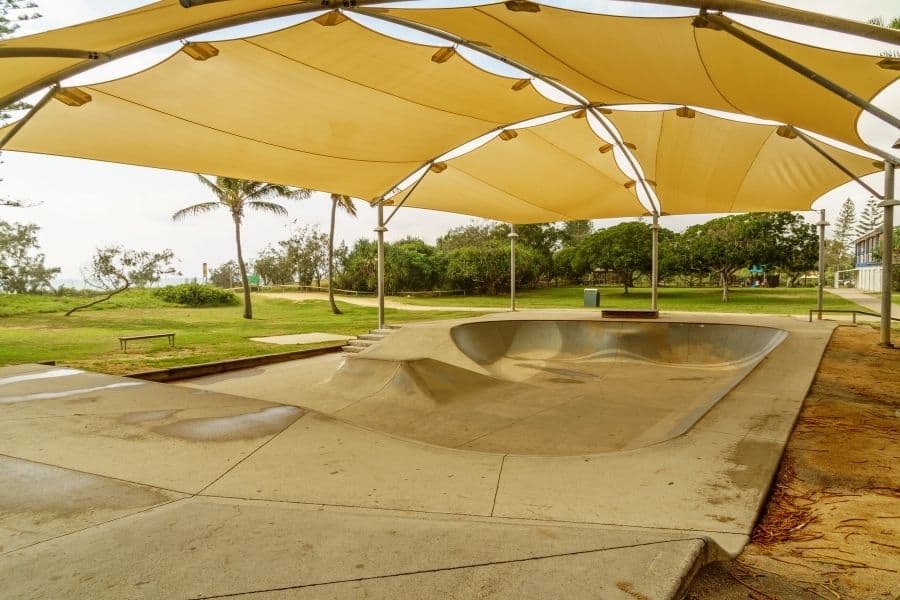
You Need to Choose a Good Area for Practice
Of course, you can always just grab your skateboard and head on out to your local skating park, but this could wreak havoc on your confidence as a beginner.
Imagine yourself being a grown adult and practicing balance in front of preteens that are skillfully managing complicated tricks on their skateboard.
Don’t worry. You’ll make it to that level eventually, but in the meantime, you may want to start out somewhere else.
It’s not challenging to find a good practice spot. You can always practice in your driveway, on the sidewalk in front of your home, or at a vacant basketball court.
Just make sure that you choose a smooth surface to avoid injuries and choose a location where you will be comfortable practicing.
Master Balance Before You Attempt Movements
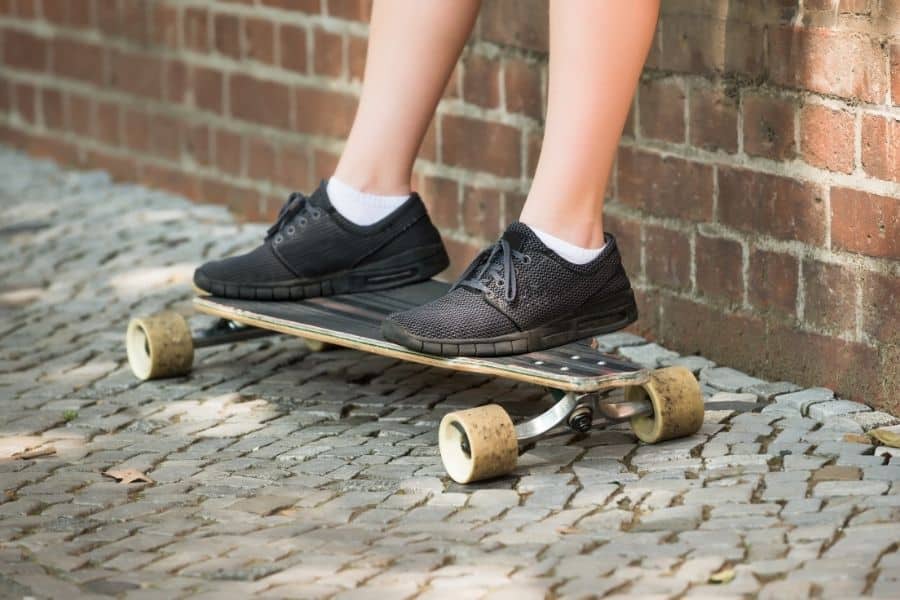
Master Balance Before You Attempt Movements
Sure, you may be tempted to just push yourself off while you are on the skateboard the second that you step onto it, but you need to slow your roll a little and master the skateboarding basics before you attempt to soar down the sidewalk while smiling and waving at your partner or friends.
Yeah, most people like to show off their tricks on a skateboard, but before you reach that level, you need to master your balance. If you’re not able to stand on the skateboard, how can you expect to move on it?
It may take time for you to get used to standing with wheels underneath you, but the grip tape can help you to stay in place without slipping off your skateboard.
The first lesson in skateboarding involves achieving the proper positioning of your feet.
To begin, your front foot should be placed on the skateboard while your back foot should remain on the ground.
While most people choose to place their left foot in front, which is known as a regular skateboarding stance, the best position is the one that you are most comfortable with.
As far as posture, your feet should always remain a shoulder’s width apart from one another.
As you practice standing and balancing on your skateboard, you should also get used to bending your knees while on the board.
In the beginning, it might help to hold onto something, but as you perfect your skills, you will slowly be able to balance on your own.
Finally, You Can Push Yourself Off On the Skateboard

Finally, You Can Push Yourself Off On the Skateboard
This is the moment that you have been waiting for. After you have finally mastered standing on the skateboard and balancing, then you can begin movements.
Skateboarding is pretty simple as long as your balance’s established.
First, you need to position yourself with both feet on the board, then lower your back foot to push off, and return your back foot to the board. When your speed starts to slow, you repeat these steps, and you got this!
Always remember to place the weight of your body on the balls of your feet to adjust yourself to the board’s movements. As far as the fancy tricks that you see kids doing down at the skating park, you’ll be mastering those too, in no time!
Frequently Asked Questions about Learning How to Skateboard
Is Skateboarding Hard Skill To Learn?
It’s really not that hard at all to learn how to skateboard, provided you invest in a high-quality skateboard and master the basics, such as posture, standing, and balance. Eventually, you will be able to learn advanced skateboarding techniques, but the basics are fairly simple.
What Should I Know Before I Learn How to Skateboard?
Of course, good preparation is key to becoming a successful skateboarder. First, you should purchase a good skateboard and helmet from a skating store, wear thick socks, never skateboard in the rain, and practice safe falling techniques, because a fall can happen even to the best of us.
Conclusion
Learning how to skateboard isn’t a complicated task, even if you are a grown adult with a nine to five job.
It’s really about investing in the right board and the proper equipment and learning how to balance on the skateboard.
Even if you never develop enough skills to show off at the skate park, you can still easily cruise through your neighborhood on the weekend and enjoy this hobby.


